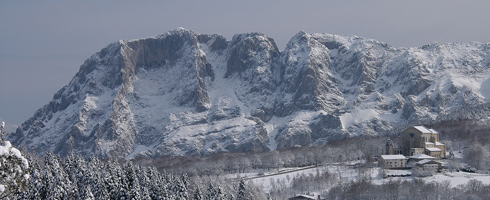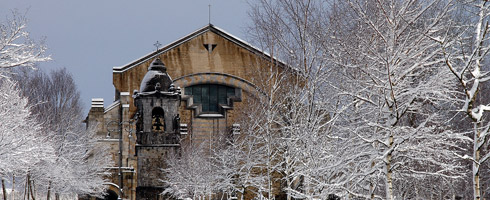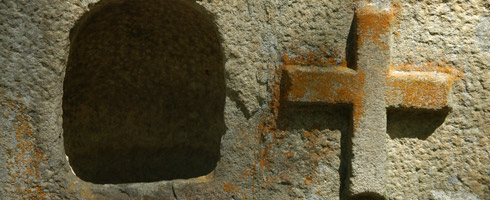Parque Natural de Urkiola · Ayuntamiento de Abadiño
Situación
Menú principal

The Peñas that make up the Urkiola Natural Park are an area of great natural and landscape value containing significant archaeological, historical and cultural resources. Over the centuries, a rich folklore has been forged on an extensive oral tradition, myths, legends and tales.
Except for the area around the Sanctuary, there is no inhabited settlement in Urkiola, except for the presence of isolated farmsteads, scattered over the lowest areas of the Park. The farmstead or “baserri” provides a livelihood for one or several families, who own a plot of land that is normally small in size, which they work and farm with their own hands and which they obviously need to live next to.
The inside of the farmstead is made up of a ground floor and one or two storeys. The stable is on the ground floor, with the living quarters on the next floor and then the barn on the upper storey.
Depopulation and the nature of the environment give rise to myths and legends, with one about Mari being the best-known in the region and throughout the Basque Country. Mari is the personification of the earth and the queen of all genies. She has two sons, Atarrabi and Mikelatz, who represent good and evil respectively, and are always at loggerheads. Mari lives in the caves of the mountains that surround Urkiola, although her favourite cave is Mariyenkobia, that is in the vertical wall of Anboto.
Christianity came gradually to the region. The first Urkiola Sanctuary is thought to date back to the 8th or 9th centuries. Over time, Urkiola became more important thanks to its strategic position and on major routes. Larger churches were built, along with a hospital to look after pilgrims that was destroyed in a fire.
The current Sanctuary was started at the end of the 19th century. It is a Neo-Romantic building that remains unfinished. The former church collapsed, although the tower built in 1870 is still standing.
At the same time as the Sanctuary was being built, chapel and areas to house visitors and pilgrimages began to spring up. The most important festivities are the 17th January, the saint’s day of San Antonio Abad, and the 13th June, San Antonio de Padua.
Special mention should be made of the Santo Cristo Chapel, dedicated to the Vera Cruz or True Cross, and the Santa Apolonia or Santutxu Chapel, both of which are near to Sanctuary and can easily be reached along the recently restored track.


2006 - 2007 © Anteiglesia de Abadiño Town Council - All rights reserved